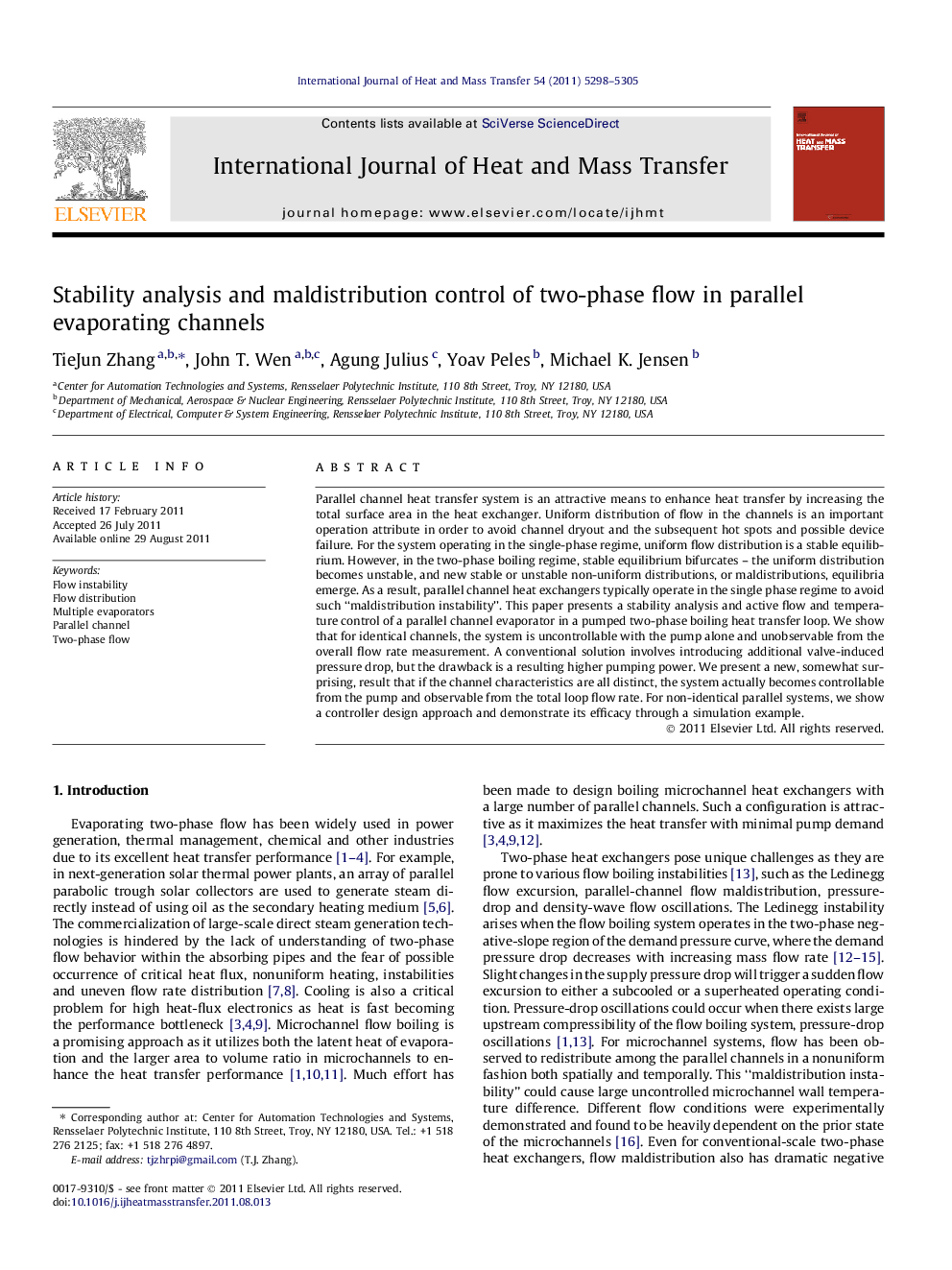| Article ID | Journal | Published Year | Pages | File Type |
|---|---|---|---|---|
| 659370 | International Journal of Heat and Mass Transfer | 2011 | 8 Pages |
Parallel channel heat transfer system is an attractive means to enhance heat transfer by increasing the total surface area in the heat exchanger. Uniform distribution of flow in the channels is an important operation attribute in order to avoid channel dryout and the subsequent hot spots and possible device failure. For the system operating in the single-phase regime, uniform flow distribution is a stable equilibrium. However, in the two-phase boiling regime, stable equilibrium bifurcates – the uniform distribution becomes unstable, and new stable or unstable non-uniform distributions, or maldistributions, equilibria emerge. As a result, parallel channel heat exchangers typically operate in the single phase regime to avoid such “maldistribution instability”. This paper presents a stability analysis and active flow and temperature control of a parallel channel evaporator in a pumped two-phase boiling heat transfer loop. We show that for identical channels, the system is uncontrollable with the pump alone and unobservable from the overall flow rate measurement. A conventional solution involves introducing additional valve-induced pressure drop, but the drawback is a resulting higher pumping power. We present a new, somewhat surprising, result that if the channel characteristics are all distinct, the system actually becomes controllable from the pump and observable from the total loop flow rate. For non-identical parallel systems, we show a controller design approach and demonstrate its efficacy through a simulation example.
